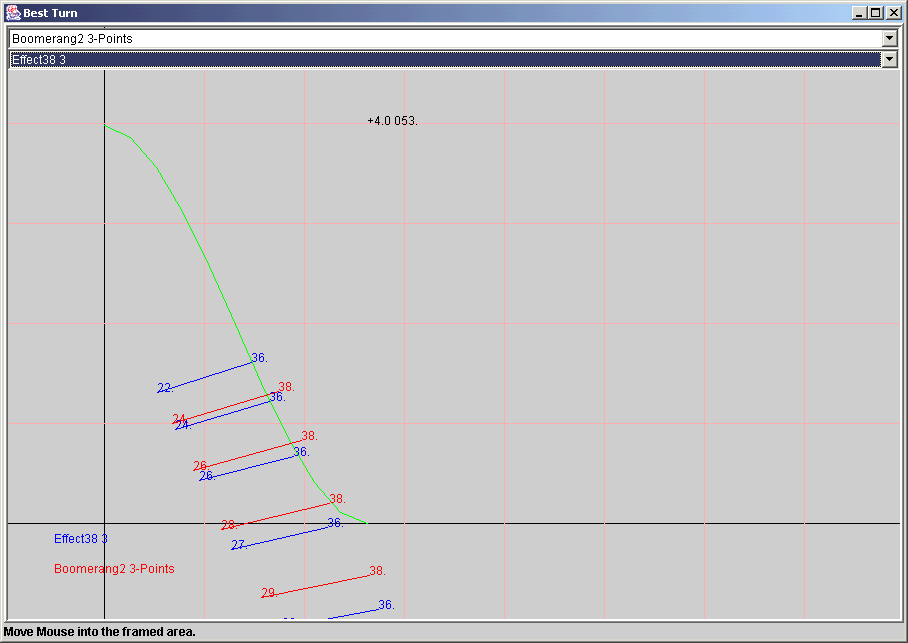
Some background info
The thermal is a math degree 3 parabola .
The turn radius of the glider is determined by the 2 toggle speeds for the inner and outer wing.
vi , inner wing speed
vo, outer wing speed
speeds can go from stallspeed to trim speed
projected wing span is s
turn radius is r
inner speed vi is at radius - (s / 2)
outer speed vo is at radius + (s /2)
center speed v = ( vi + vo ) /2
vi / (r-s/2) = vo / (r+s/2)
vo*r - vo*s/2 = vi*r + vi*s/2
r*(vo-vi) = (vi+vo)*s/2
radius r = (s/2) * (vi+vo) / (vo-vi)
The centrifugal acceleratione while turning is
z = v*v / r
while the usual weight stays pointing down with g = 9.81 m/ss
You bank angle is tan a = z/g
The sink of the glider is determined by using the center speed
v
and applying it on the polar definition of the glider.
But this sink would apply for straight and level flight.
The adjusted sink = sink / cos a , with a the bank angle
The total lift or sink of the glider in the thermal is then defined as
total = lift by thermal + adjusted sink
with lift by thermal a positibe value
and adjusted sink a negative value in m/s
The code iterates through vi and vo from stall speed to trim speed
The polar is defined from minimum sink to maximum speed
Which is not 100 percent correct for this approach here.
The part of the polar from stall speed to minimum sink is missing.
If the center speed is below minimum sink speed I set
it to minimum sink.